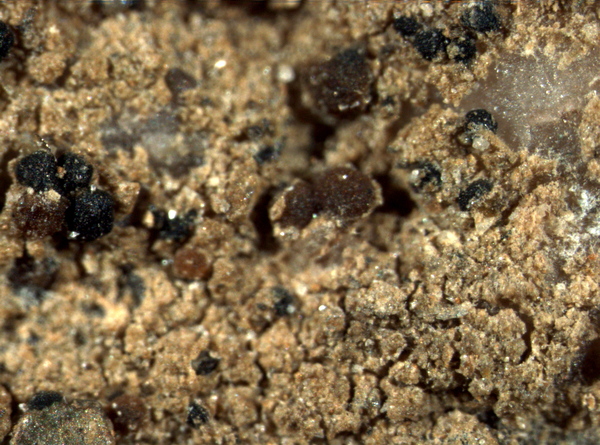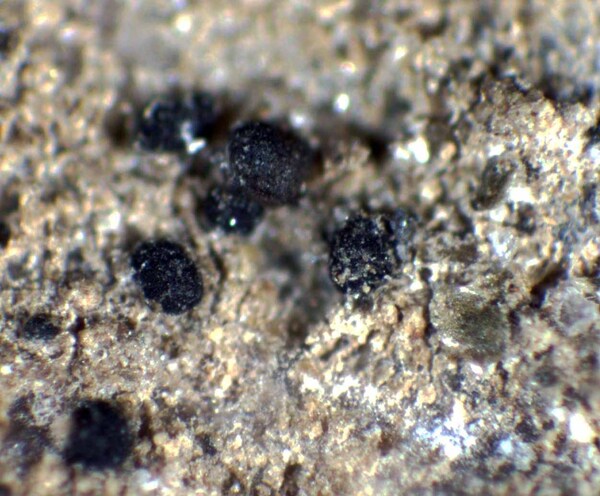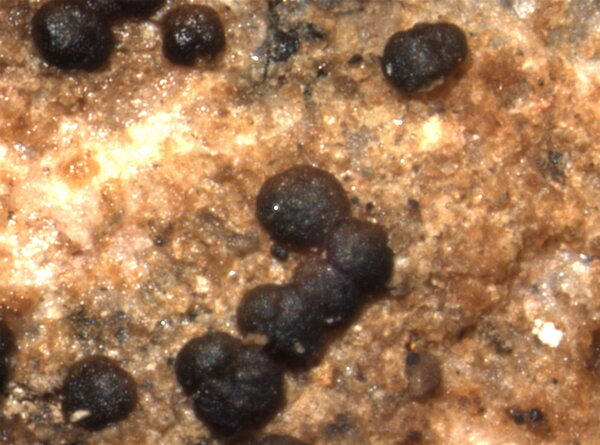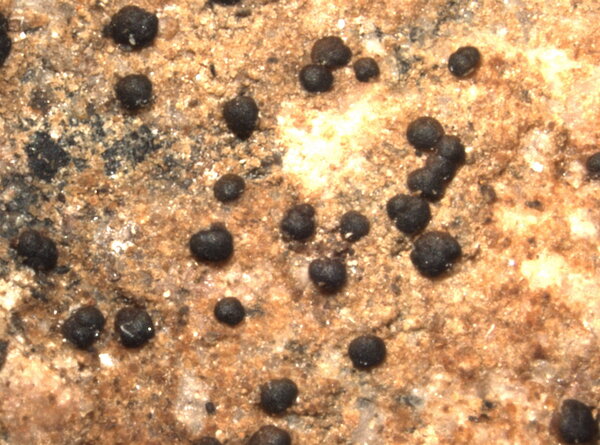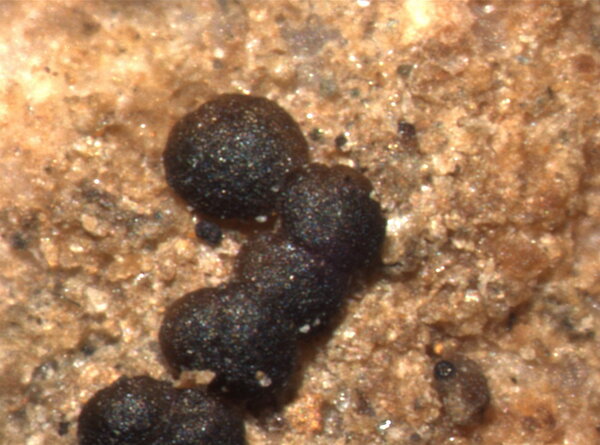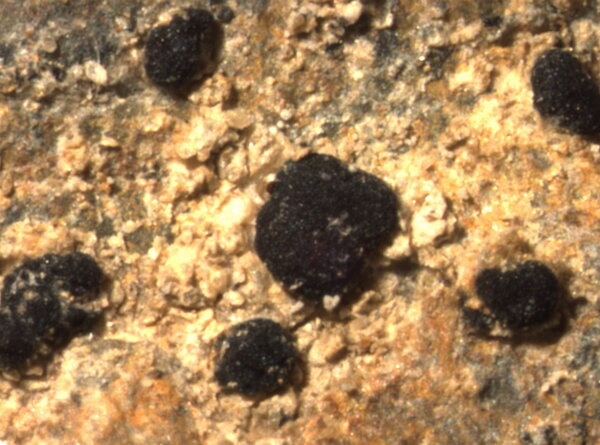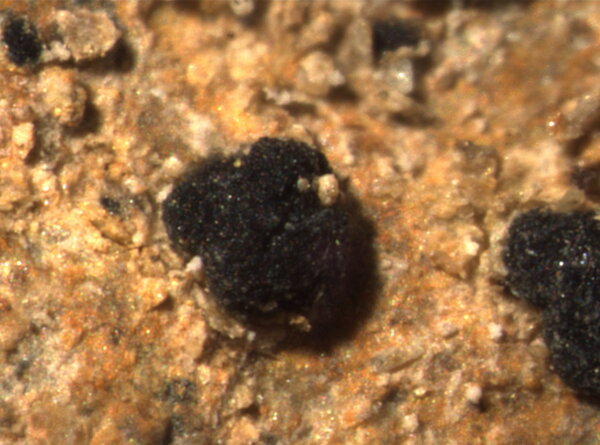Brianaria sylvicola (Körb.) S. Ekman & M. Svenss.
Lichenologist, 46: 292, 2014. Basionym: Lecidea sylvicola Flot. ex Körb. - Syst. Lich. Germ.: 254, 1855.
Synonyms: Biatora smaragdina Arnold; Biatora sylvicola (Körb.) Müll. Arg.; Lecidea aggerata Mudd; Lecidea hellbomii J. Lahm; Lecidea hypocyanea Vain. non Stirt.; Lecidea incincta Nyl.; Lecidea sylvicola var. hellbomii (J. Lahm.) Leight.; Lecidea vainioi H. Magn.; Micarea sylvicola (Körb.) Vězda & V. Wirth
Distribution: N - Frl (Tretiach & Hafellner 2000), TAA (Nascimbene & al. 2022), Lomb, VA (Borlandelli & al. 1996, Piervittori & Isocrono 1997, 1999), Lig (Brunialti & al. 1999). C - Tosc.
Description: Thallus crustose, episubstratic, brownish, greenish brown or bluish grey, rimose and sometimes almost areolate, finely granulose in marginal parts. Apothecia micareoid, sessile, not constricted at base, 0.2-0.5 mm across, sometimes confluent and forming up to 1.3 mm wide tuberculate aggregates, with a convex-hemispherical, black to bluish black disc, from the beginning without a distinct proper margin. Proper exciple absent; epithecium colourless or greenish, K- or K+ intensifying green, N+ red; hymenium colourless or greenish, 40-65 μm high; paraphyses scarce, of two types: the majority sparingly branched and 0.5-1.5 μm thick, the others simple, often fasciculate, and 1.5-2 μm thick; upper part of hypothecium dark green, , K- or K+ intensifying green, N+ red, lower part purple-brown, K+ intensifying purple, of interwoven hyphae. Asci 8-spored, cylindrical-clavate, the I+ blue tholus with a wide, I+ dark blue tube structure that expands towards the top, without a pale axial body, Psora-type. Ascospores 1-celled, rarely 1-septate, hyaline, ellipsoid or ovoid-ellipsoid, (6-)7-10 x (2.5-)3.5-4.5 µm, thin-walled. Pycnidia to 0.2 mm across, immersed, the wall dark green, K-, N+ purple. Conidia bacilliform to oblong-ovoid, often constricted in the middle, 3.5-7 μm long. Photobiont chlorococcoid, the cells thin-walled, globose, and 5-12 µm wide, or ellipsoid and up to 15 x 10 µm. Spot tests: K-, C-, KC-, P-, UV-. Chemistry: thallus without lichen substances.
Note: on shaded, humid, rain-sheltered surfaces of siliceous rocks, e.g. in forests; largely misunderstood and overlooked in Italy.
Growth form: Crustose
Substrata: rocks
Photobiont: green algae other than Trentepohlia
Reproductive strategy: mainly sexual
In underhangs rarely wetted by rain
Pioneer species
Commonnes-rarity: (info)
Alpine belt: absent
Subalpine belt: rare
Oromediterranean belt: very rare
Montane belt: rather rare
Submediterranean belt: extremely rare
Padanian area: absent
Humid submediterranean belt: rare
Humid mediterranean belt: absent
Dry mediterranean belt: absent

Predictive model
Herbarium samples
Growth form: Crustose
Substrata: rocks
Photobiont: green algae other than Trentepohlia
Reproductive strategy: mainly sexual
In underhangs rarely wetted by rain
Pioneer species
Commonnes-rarity: (info)
Alpine belt: absent
Subalpine belt: rare
Oromediterranean belt: very rare
Montane belt: rather rare
Submediterranean belt: extremely rare
Padanian area: absent
Humid submediterranean belt: rare
Humid mediterranean belt: absent
Dry mediterranean belt: absent

Predictive model
| Herbarium samples |
 Index Fungorum
Index Fungorum
 GBIF
GBIF

